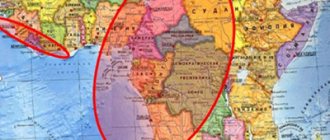Polycythemia vera
(IP) is a clonal myeloproliferative disease of a chronic nature with a relatively benign course, affecting hematopoietic stem cells and accompanied by the proliferation of three hematopoietic lineages. It is characterized by an increase in the number of red blood cells, an increase in the concentration of hemoglobin, blood cells (leukocytes, erythrocytes, platelets) and total blood volume.
Polycythemia vera is also known as Vaquez's disease, true, or red, erythremia. Belongs to orphan (rare) diseases. It mainly affects people over 60 years of age, more often men. In young people, the disease is less common but has a more unfavorable course.
According to ICD-11, IP is assigned code 2A20.4.
Causes
The exact causes of the disease are still unknown. Scientists suggest that hereditary predisposition, exposure to ionizing radiation and toxic substances play a significant role in the development of pathological changes.
In 20-30% of patients with erythremia, chromosomal abnormalities are detected ( https://cyberleninka.ru/article/n/klinicheskie-rekomendatsii-po-diagnostike-i-terapii-ph-negativnyh-mieloproliferativnyh-zabolevaniy-istinnaya-politsitemiya-1/viewer ).
The likelihood of developing erythremia increases in funeral home employees who embalm bodies, in people who are forced to frequently come into contact with gasoline and other petroleum products, and in those exposed to low doses of radiation. In people who survived the atomic bombing of Nagasaki and Hiroshima, a high risk of developing IP was not observed.
Treatment with folk remedies
Polycythemia vera, the symptoms and treatment of which are described above, is a very serious disease that requires treatment by a specialist and constant monitoring. Therefore, it is better not to practice treatment with folk remedies. Nevertheless, one or another forum for patients with erythremia often contains recommendations regarding the use of drugs that affect the composition of the blood. It is important to understand that any of the methods can only be used as an additional means to improve the condition, and in no case replace the main treatment. For those who are interested in how polycythemia vera is treated with folk remedies, the forum suggests using the following methods:
- Sweet clover infusion. 10 g of dry herb should be poured with a glass of boiling water. After a few hours, strain, drink half a glass twice a day for a month.
- Cranberry. Pour 30 g of dry or fresh berries into 1 glass of water and boil. Leave in a warm place for half an hour. Drink with honey instead of tea.
- Garlic. Grind 3 heads of garlic in a meat grinder, pour the mixture into a jar and fill with water. Leave for 15 days in a dark place. Strain the liquid, add the juice of 2 lemons and 50 g of honey. Stir, consume 1 tbsp. l. before bedtime.
- Chestnuts. The chestnut peels need to be crushed and approximately 50 g of raw materials should be poured with 500 ml of vodka. Leave for half a month, then filter and consume 1 tbsp. l. product diluted in a small amount of water three times a day. The course lasts three weeks.
- Fresh juices. Consume 100 g of fresh orange juice every day. It is also recommended to drink a glass of freshly squeezed carrot juice daily.
- Gingko biloba. Pour 50 g of dry crushed leaves of this tree with 0.5 liters of alcohol. Leave for three weeks in a dark place. Drink 10 drops of the product each time before meals.
Symptoms of the disease
Clinical manifestations of IP are divided into 2 groups:
- Plethoric (“plethora” - plethora) syndrome - the mass of red blood cells increases, due to which:
- headaches and dizziness occur;
- pressure increases;
- the skin and mucous membranes acquire a bluish or red-cherry tint;
- disturbing skin itching;
- the conjunctiva turns red;
- vision deteriorates, spots appear before the eyes;
- erythromelalgia develops - small vessels periodically dilate, which provokes redness of the fingers and toes, unbearable burning pain and burning;
- thrombosis and cerebrovascular insufficiency occur;
- angina attacks are observed.
2. Myeloproliferative syndrome is caused by hyperplasia of three hematopoietic lineages: erythroid, granulocytic, megakaryocyte
With polycythemia vera, myeloid metaplasia of the spleen and splenomegaly often develop (the size of the spleen increases). The most common complications are thrombosis (occurring in 39% of patients), thromboembolism and bleeding (gingival, nasal, gastrointestinal, menorrhagia).
The risk of transformation of polycythemia vera into acute myeloid leukemia is 5%, and into myelofibrosis - less than 10% ( https://cyberleninka.ru/article/n/istinnaya-politsitemiya-sovremennye-predstavleniya-o-pathogeneze-diagnostike-lechenii/viewer ) .
With polycythemia vera symptoms
depend on the stage:
- Stage I (asymptomatic). The main signs (plethora, erythrocytosis, skin hyperemia) are moderate, the number of leukocytes and platelets, the size of the spleen is normal, there are no vascular complications or manifestations of fibrosis. Blood pressure increases and blood circulation is disrupted. Duration – 5 years or more.
- Stage IIA (erythraemic). There is no myeloid metaplasia of the spleen. Skin hyperemia, hepatosplenomegaly, and scleral injection are evident. A general blood test shows thrombocytosis, erythrocytosis, neutrophilia, and bone marrow examination shows focal myelofibrosis, total three-line hyperplasia, and often reticulin fibrosis. Thromboembolic complications are common.
- Stage IIB (erythraemic). Myeloid metaplasia is present. Hepatosplenomegaly develops - the liver and spleen simultaneously increase in size. A general blood test reveals leukocytosis, shifted to myelocytes, and a possible decrease in the number of platelets and red blood cells. When diagnosing bone marrow, focal myelofibrosis and panmyelosis are noticeable.
- Stage III (posterythremic, anemic) – terminal. The concentration of blood cells and hemoglobin sharply decreases. Symptoms of tumor intoxication become noticeable, and hemorrhagic complications occur. Myelofibrosis develops and blast crisis occurs.
General information
The disease “polycythemia vera” is a tumor process that affects the blood system and is benign. Synonyms for this name are erythremia , primary polycythemia , Vaquez disease . The pathological process is associated with hyperplasia of the cellular elements of the bone marrow (myeloproliferation). As a result, the number of red blood cells in the blood increases significantly, and the level of platelets and neutrophilic leukocytes . Due to the increase in the number of red blood cells, the mass of circulating blood also becomes larger and becomes more viscous. As a result, blood circulation slows down, blood clots form, which leads to hypoxia and impaired blood supply.
However, for many years, erythremia can occur without significant symptoms. Most often, erythremia affects older people, but it also occurs in young people and children. In young people, the disease is more severe. Men get sick more often than women. There is a genetic predisposition to the development of this disease. The disease code for “erythremia” according to IBC-10 is D45. According to medical statistics, the prevalence of Vaquez disease is 29 cases per 100,000 population.
Diagnosis of the disease
At the initial appointment, the doctor listens to complaints and examines the medical history. He also conducts a physical examination, during which he examines the skin and mucous membranes, assessing their pigmentation, the presence of hemorrhages, edema, and trophic disorders.
Then the specialist refers the patient for laboratory and instrumental diagnostics, which may include:
* clinical, biochemical and molecular genetic blood analysis;
* coagulogram;
* study of iron metabolism;
* blood test for HIV infection and hepatitis;
* trephine biopsy of the bone marrow followed by cytological, histological and histochemical analysis of the biopsy;
* Dopplerography of cerebral arteries;
* Ultrasound of the abdominal organs.
The main marker for diagnosis is the Jak-2 gene mutation, which occurs in 95% of patients. Also, in patients with PV, the level of erythropoietin should be reduced or at the lower limit of normal and never elevated, which is initially used for differential diagnosis.
Classification
There are two forms of polycythemia - true and relative .
True erythremia , in turn, can be primary or secondary .
- Primary erythremia is an independent myeloproliferative disease in which the myeloid lineage of hematopoiesis is affected.
- Secondary polycythemia occurs when the activity of erythropoietin increases. Secondary erythrocytosis (also called “symptomatic erythrocytosis”) is a compensatory reaction to general hypoxia . Symptomatic erythrocytosis can develop in patients with a chronic form of pulmonary pathology, adrenal tumors, heart defects, etc. Physiological erythrocytosis is sometimes noted during ascent to altitude.
The relative form of the disease is noted if the level of red blood cells is normal, but the plasma volume decreases. This condition is also called polycythemia pseudo or stress polycythemia .
Erythrocytosis in children
In children, physiological erythrocytosis can be diagnosed immediately after birth. This diagnosis in newborns is confirmed if the venous blood hematocrit level increases by ≥ 65%.
Polycythemia in newborns can manifest itself as severe symptoms (thrombosis, heart failure, central nervous system disorders) or mild (lethargy, tremor, increased bilirubin ). Sometimes babies' skin is too ruddy or darkish. Poor appetite may occur. But in most cases, newborns with polycythemia do not have significant symptoms.
Most often, polycythemia develops in post-term babies or in babies whose mothers suffered from diabetes , hypertension , smoked during pregnancy, etc. This condition can also occur due to the fact that the child received too much blood from the placenta during intrauterine development. It is likely to manifest against the background of congenital defects, hypoxia , etc.
For the purpose of treatment, intravenous fluid replacement is performed, and sometimes a partial exchange blood transfusion is performed. This allows you to reduce the concentration of red blood cells.
Diet for polycythemia
Diet for thick blood
- Efficacy: therapeutic effect after 1 month
- Time frame: three months or more
- Cost of food: 1600-1700 rubles per week
For people who suffer from erythremia, it is advisable to minimize the amount of protein foods on the menu. The fact is that protein helps stimulate the hematopoietic system. It is especially important to avoid consuming fatty fish and meats, as well as hard cheeses with a high fat content. cholesterol levels should be avoided , as this poses a danger from the point of view of blood clots.
It is recommended to adhere to a plant-based and fermented milk diet. The following foods should be present in the diet of such patients:
- vegetables – raw, stewed, boiled;
- fresh fruits and berries;
- fermented milk products - yogurt, kefir, yogurt, fermented baked milk, low-fat cottage cheese and sour cream;
- greens – parsley, dill;
- eggs;
- dried fruits;
- whole grain dishes;
- green tea with ginger;
- seaweed;
- bitter chocolate;
- nuts.
Consequences and complications
The following conditions may develop as complications:
- Blood clots . As blood density increases, blood flow slows. In addition, changes occur in platelets, and this leads to an increased risk of blood clots. In turn, thrombus formation increases the likelihood of heart attack, stroke, thromboembolism, and deep vein thrombosis.
- Splenomegaly is an enlarged spleen. Since the spleen works very intensively during erythremia, the organ eventually enlarges.
- Open ulcers of the stomach, esophagus, duodenum .
- Gout is inflammation of the joints.
- Gallstones and urolithiasis are a consequence of an increase in the concentration of uric acid. Myelofibrosis is the progressive replacement of bone marrow by scar tissue.
- Myelodysplastic syndrome is the undermaturation or improper functioning of stem cells.
- Acute leukemia is a malignant process.
Forecast
If a patient is diagnosed with polycythemia vera, the prognosis depends on the degree of development of the disease. In the absence of adequate treatment, a third of patients die within the first five years. The most common cause of death is thrombosis and embolism . In some patients with the third stage of polycythemia (20-50%), the disease transforms into acute leukemia.
If the correct therapy is carried out for a patient diagnosed with erythremia, the prognosis for life is more optimistic. Such patients manage to extend their lives by decades.







